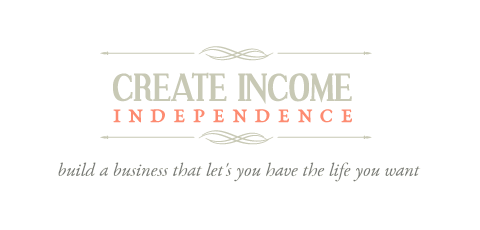
A business is a system. And like any system, all areas have to be working well and in harmony with the other parts of the system. If there is a breakdown in one area, then the whole system or business will suffer.
The key is to identify the obstacles that are causing a problem and focus on fixing the weak link. Until you fix the weakest part you will limit your business from achieving higher performance and meeting your goal.
Theory of Constraints
This idea is based on the Theory of Constraints (TOC) developed by Dr. Eliyahu Goldratt and contained in a series of books that he wrote. The Core Idea is “Every system has a limiting factor or constraint. Improving this constraint is the fastest way to significant improvement.”
Finding and managing constraints is the foundation for continued growth. It focuses on having each part work together smoothly as a whole.
People often associate TOC with manufacturing, but it can apply to any business, personal concerns, and even self-improvement.
Here is a series of actions to determine the obstacles in your business.
Setting the goal
Start by identifying your most important goal. Most people in business will say to make more money, and that may be true for many businesses. However, you need to be specific, very specific.
How much money do you want to earn, in what period of time, and by doing what? For instance, let’s say you want to make $10,000 a month in the first year by selling a $129.00 e-course. Once the goal is clearly stated, you need to determine your “critical success factors as defined in TOC.
Success factors
Success factors are elements that are essential to achieving your goal. Here are some factors that, if there and working well will lead to success.
- Products you need to produce
- Customers for your products
- Marketing channels and ads
- Prices you need to charge
- Profits you must earn
Define the obstacles
The next step is to identify what obstacles are stopping you from having those success factors. The common constraints for an online business are creative ideas, marketing, time, pricing, money, and technical ability.
Of course, if the online business sells a physical product, it can also have a supply, distribution, production, or retail constraint.
Analyze what is getting in the way. Take the first success factor listed above; the products you need to produce. You conclude the obstacles are not having any creative idea and not having the technical ability to make it available online.
Or, perhaps you’re not getting enough customers to make your $10,000 per month goal. What is the obstacle? You don’t know, so you have to look at several factors and do the research. It could be the price is not right, you’re not attracting the right people who want your course, or you’re advertising on the wrong channels.
Let’s say you have determined that there is a market for your course, the advertising channel is good, but you’re not attracting the right people who want and need what you offer.
Find out why. Go further and see if the content you’re using is speaking to the right market, or it’s confusing, doesn’t explain the benefits, or is sending them to a place, such as a web page that isn’t believable.
What are the causes?
It’s now time to look deeper at why this is a problem, the causes, and how you can fix them. There may be several things that are causing the problem.
Continuing with our example. You can see from an analysis of your metrics that prospects are going from your ad to the content on your landing page but not going any further.
You obviously have an interested market. Interested enough to read what you say. However, either what you say is not meeting their needs or maybe the next step is complicated and you lose them.
What is causing this? Maybe you have not hit their pain point or they don’t want to move on because they are confused and have questions.
Here you have to keep digging until you can find the root cause. Perhaps, you see that your content doesn’t tell them how this will solve their problems, and the landing page asks for a lot of information that turns them away. Keep going until you determine all the possible causes and then decide what needs to be fixed.
Fix one thing at a time to be able to judge if this is truly an obstacle. If this does get you closer to your goal, you can now move on to the second and third items you’ve identified. If these are the true stumbling blocks, you should see huge results.
If there is not much improvement, go back and analyze again. There may be a key cause that you have never thought of.
The thinking process
The TOC thinking process believes that every problem comes from a core conflict and that conflict must be identified, and a solution found. Dr. Goldratt summarizes the process with five steps.
Five Focusing Steps:
- Identify the system’s constraint. It is necessary to determine the true constraint. Fixing a part of the system that is not the real problem is a waste of time.
- Exploit the constraint. Once you discover the constraint. Drill down to why it’s a constraint and what can be done to eliminate it.
- Subordinate everything else to the constraint. You need to make sure you bring the constraint up to the level of the system. In other words, don’t keep putting effort into the items that are working well. That will only make the constraint more of a problem.
- Elevate the constraint. Invest the time and money to eliminate the constraint. Put in all the resources necessary.
- Prevent inertia from becoming the constraint. Once the original constraint is recognized and removed don’t assume the problems are fixed. There will always be a new place to upgrade. Go back and look at finding the newest weak link and continue with the process of improvement.
Map it.
The best way to view this is to put it on a map.
Start with your goal at the top. Below it, list all the success factors that are needed to meet the goal. At the next level down spell out all the obstacles that get in the way of achieving success. At the last level, list all the causes you can identify that are the whys that the obstacles exist.
With this visual, you may notice that there are several causes that contribute to the obstacles and several obstacles that prevent the success factors. Now you should clearly see the problem and set a plan of action,
Conclusion
This is a very informative exercise. If you do it carefully you will find the obstacles holding your business back from the success you want. And by taking action you will see good results without effort wasted in doing unimportant things.
The Solo Entrepreneur’s Guide
To make sure you get access to our monthly newsletter, subscribe to The Solo Entrepreneur’s Guide.
The valuable content in that publication will help you transition from the job world and create a self-reliant income, live life your way, and achieve wealth, freedom, and independence.


Leave a Reply